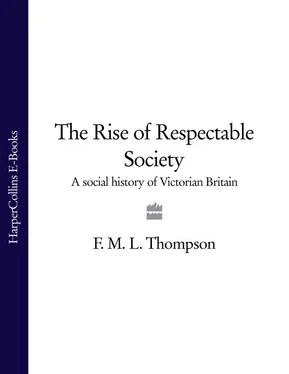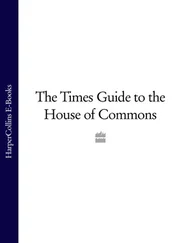The fact that something like two thirds of the post-1832 boroughs might be thus classed could indicate no more than the limited, cautious, imperfect, and muddled nature of the Reform Act itself, removing only the most glaring defects of the unreformed system, perpetuating many anomalies and inequalities of representation, and never intending to supply an accurate political mirror of the actual distribution of economic and social weight and consequence in the nation. Even so, it is significant that among the top third of boroughs, measured by the size of their electorates, less than half would figure on any list, however widely drawn, of thrusting, expanding places at the forefront of economic change. Thus Chester, Exeter, Bath, Worcester, or York were in the same league as Manchester, Birmingham, or Leeds in numbers of voters, although not, of course, in total population; while Bedford, Reading, Colchester, Canterbury, and Maidstone could out-vote but not outnumber Stockport, Salford, Bolton, Oldham, and Wolverhampton. This was an effect of the franchise and the fact that the distribution of £10 householders differed, often quite sharply, from the distribution of population. In part this was due to marked regional differences in house values, themselves produced by complex interactions of custom and market forces, with the great majority of houses in London having rents of over £10 a year so that many working-class householders obtained the vote, while essentially similar houses in Leeds or Manchester were rented at £5 to £8 a year. In part, however, it was due to regional variations in the numbers and proportions of men with high enough incomes to command a £10 house and the standing of respectability and modest substance that went with it; in relation to total population the older established towns tended to have a higher proportion of such householders than those of most recent rapid growth.
While it is clear that the £10 householders did not constitute a single social class, since there were wide social differences within towns between those who just qualified and those whose houses could be worth £50 or £100 a year, as well as between towns, it is also clear that this property qualification embraced virtually the entire population of middle-class family men, even if in some localities it also had the effect of bringing some artisans and skilled workers within the net. The middle class thus attached, in expectation, to the support of the constitution contained large numbers of small shopkeepers, traders, and dealers, small masters and lesser professional men, men of some consequence and influence in their communities but far removed in wealth and status from the great overseas merchants, the bankers and financiers, and the industrial capitalists. Whether they were precisely the sort of men Earl Grey had had in mind when he had spoken of ‘the middle classes who form the real and efficient mass of public opinion, and without whom the power of the gentry is nothing’, may perhaps be doubted, since at the time he was more concerned with the intelligent, educated and articulate men who shaped informed opinion in the press, the journals, the literary and philosophical societies, and the counting houses. Nevertheless, they formed the core of the middle classes, the most numerous and most widely spread groups with a solid stake in the country, however small their individual properties. This core had been growing in size and wealth as a result of the general influences of population growth and economic expansion, but only in some parts, depending on location, had it become integrated into industrial society in direct economic and cultural dependence on the great capitalist employers. In bringing the urban middle classes within the political nation the new franchise brought in something at once more varied, and more traditional, than simply an industrial-based middle class. This was as much a matter of reflecting the nature of the existing social structure as it was one of political calculation, although it did not escape notice that the lesser bourgeoisie of the smaller towns were amenable to patronage and influence.
Political calculation entered strongly into the Reform Act’s treatment of the countryside, and it is arguable that the entire business of reaching some kind of accommodation with the towns and the urban middle classes was of secondary importance to the political managers, whose prime concern was to revitalize and strengthen the power of the landed interest. In this view an inescapable minimum of concessions to the aspirations of the towns was a small price to pay for securing the power base of the landed classes in the counties. The trouble with the unreformed regime had not been its failure to reflect adequately the importance of new social forces in the community, but its increasingly corrupted and attenuated representation of the opinions and interests of the country landowners. Those opinions, it was argued, could only be properly expressed by county members chosen because of the trust placed in them by county constituencies which were too large to be dominated by one or two individuals, and too independent to be bribed. Instead, too many of the landed MPs sat for rotten or pocket boroughs, represented nothing except their patrons’ or their own personal wealth, were prone to be ensnared by the Administration of the day, and failed to voice the feelings of their order. The answer was to increase the county representation, and to purify the county electorates of urban and non-agricultural foreign bodies. This was done in 1832. The number of county members was increased from 188 to 253; and the parliamentary distinction between county and borough was made to correspond much more closely than before to the economic and social distinction between country and town. On the one hand, the invasion of county electorates by extraneous elements who qualified for the 40-shilling freehold county vote by the ownership of urban property was rolled back by the creation of boroughs in which such property conferred the vote; on the other hand, the agricultural character of county electorates was boosted by the enfranchisement, on a Tory amendment it should be noted, of the £50 a year tenants-at-will, that is the middling and larger tenant farmers.
As with so much else about the Reform Act, the line between town and country was not so clearly drawn in practice as this picture implies. To begin with, there were still many lesser towns, particularly in the manufacturing districts, that had not been made into parliamentary boroughs; those who owned freehold property in them worth over 40 shillings a year, whether in the form of warehouses, workshops, offices, factories, mills, or houses did not matter, qualified for votes in the county in which the town lay. Then, while anyone owning property in a borough worth at least £10 a year was expressly restricted to acquiring only a vote in that borough, those who owned smaller parcels of property within a borough worth between 40 shillings and £10 a year remained eligible for votes in the surrounding county. Some dilution of county electorates with urban blood therefore remained, and in the industrial counties it was of considerable political moment. The Whigs in fact had hedged their bets over the wisdom of securing the preponderance of the landed interest in the counties, doubtless calculating that the increase in landlord influence stemming from tenant farmers’ votes would chiefly benefit the Tories, and had therefore retained the urban propertied counter-weight in the counties which they or their liberal allies might hope to turn to advantage. Nonetheless, although it was thus fudged in its execution partly at least for party reasons, one important strand in the Reform design was to pen up the middle classes in the boroughs the better to secure the power base of the aristocracy and gentry in the counties, and thus preserve landed and agricultural interests from being undermined.
Читать дальше












